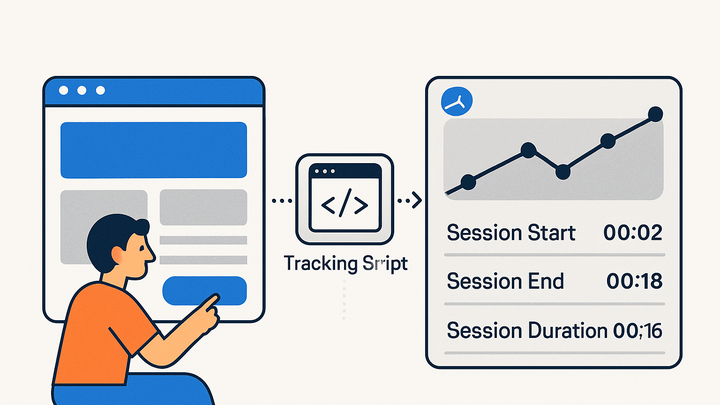Published on 2025-06-29T18:46:40Z
What is Session Tracking? Definition and Examples
Session Tracking is the process of monitoring and recording individual user visits to a website or application. It breaks down visitor activity into discrete sessions, capturing metrics such as session duration, number of pageviews, and bounce rate. In the context of campaign tracking & analytics, session tracking enables marketers to attribute conversions and engagement to specific traffic sources or marketing campaigns. Popular tools like Plainsignal provide cookie-free session tracking via a lightweight JavaScript snippet, while UTM Guru simplifies building and managing UTM-tagged URLs for accurate campaign attribution. By analyzing session data, teams can optimize user journeys, improve content relevance, and measure the effectiveness of paid and organic campaigns. Understanding session behavior is fundamental to data-driven marketing and user experience optimization.
Session tracking
Session Tracking monitors individual user visits on websites, capturing session metrics for campaign attribution and analytics.
Understanding Session Tracking
Overview of session tracking and its role in web analytics.
-
Session definition
A session represents a single visit by a user to your website, starting when they arrive and ending after a period of inactivity or when the browser is closed.
-
Session vs user tracking
Session tracking focuses on discrete visits, while user tracking identifies unique individuals across multiple sessions.
-
Session timeout
By default, a session ends after 30 minutes of inactivity, but this timeout can be adjusted based on your analytics requirements.
How Session Tracking Works
Mechanisms behind identifying and grouping user interactions into sessions.
-
Identification methods
Sessions can be identified using cookies, localStorage, URL parameters, or device fingerprinting.
- Cookies:
Store a session ID in a first-party cookie to persist across pageviews until expiration.
- Local storage:
Save session identifiers in the browser’s localStorage, which persists beyond page reloads.
- Url parameters:
Append a session ID to URLs to track sessions without relying on browser storage.
- Fingerprinting:
Use browser characteristics to create a unique session identifier without cookies.
- Cookies:
-
Session stitching
Reassembling user interactions across multiple channels or devices into a coherent session.
-
Cookie-free approaches
Modern analytics tools like PlainSignal use fingerprinting and server-side aggregation to track sessions without cookies.
Key Session Metrics
Important metrics derived from session data that inform marketing and UX decisions.
-
Session count
Total number of sessions recorded in a given timeframe.
-
Average session duration
Mean length of sessions, indicating engagement depth.
-
Bounce rate
Percentage of sessions with only a single pageview, signaling potential UX issues.
Implementing Session Tracking with SaaS Tools
Practical steps to set up session tracking using popular analytics and UTM management platforms.
-
Plainsignal integration
Insert the PlainSignal tracking snippet into your site’s <head> to enable cookie-free session tracking:
<link rel="preconnect" href="//eu.plainsignal.com/" crossorigin /> <script defer data-do="yourwebsitedomain.com" data-id="0GQV1xmtzQQ" data-api="//eu.plainsignal.com" src="//cdn.plainsignal.com/plainsignal-min.js"></script>- Add script to head:
Place the
<link>and<script>tags inside the<head>section of every page you want to track. - Configure attributes:
Replace
data-dowith your domain anddata-idwith your PlainSignal site ID.
- Add script to head:
-
Utm guru for url tagging
Use UTM Guru to build and manage UTM parameters that initiate session attribution for campaigns.
- Generate utm urls:
Use the builder to add
utm_source,utm_medium,utm_campaign, and other parameters. - Save and manage links:
Store generated UTM links in your UTM Guru dashboard for future reference and consistency.
- Generate utm urls:
Best Practices and Considerations
Guidelines to ensure accurate, privacy-compliant session tracking.
-
Privacy compliance
Ensure session tracking adheres to GDPR, CCPA, and other data protection regulations.
- Consent management:
Obtain user consent before activating tracking scripts.
- Data retention:
Define a retention policy for session data to minimize privacy risks.
- Consent management:
-
Custom session timeouts
Adjust session timeouts to match your site’s user behavior, especially for long-form content or apps.
-
Bot filtering
Implement measures to exclude non-human traffic and maintain data quality.
